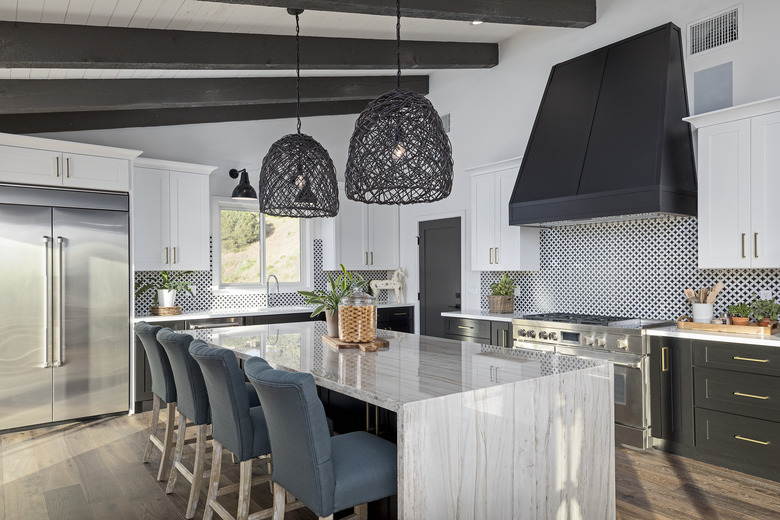How To Remove Lamination From Kitchen Cabinets
We may receive a commission on purchases made from links.
Are your laminate kitchen cabinets in sore need of an upgrade? Peeling laminate should be completely removed before painting, staining or otherwise refinishing the wooden composite underneath. But before you start to remove lamination from your kitchen cabinets, do a little investigating to ensure that the outer layer is true laminate and not melamine or thermofoil. Each of these materials serves the same purpose but is removed in a different way.
Laminate, Melamine or Thermofoil?
Laminate, Melamine or Thermofoil?
Laminate, melamine and thermofoil all provide a thin decorative layer that covers thin composite or particleboard. These materials come in a variety of colors and can also mimic the look of real wood stain. Laminate is composed of paper and a plastic resin, whereas melamine and thermofoil are plastics.
According to Trig Builders, laminate and melamine adhere to the wooden cabinet face with a glue, whereas thermofoil sheets are vacuum-sealed on. Regardless, you can follow a similar procedure for removing all three types even if you aren't exactly sure which one covers your kitchen cabinets. Removing lamination from kitchen cabinets may require a little more elbow grease and time compared to the other two materials
Remove Lamination from Kitchen Cabinets
Remove Lamination from Kitchen Cabinets
To start, remove any exterior hardware from the kitchen cabinets. If the hinges are mounted on the inside, you can remove the laminate without disassembling the cabinets. With a hair dryer on the lowest heat setting, blow hot air across the edge of the laminate and continue across the entire cabinet in a sweeping motion.
Within seconds, you should be able to get your fingertips under the edge of the laminate and start peeling it away, as Ray Hayden demonstrates. Apply more heat to any stubborn areas until the entire layer comes off. Don't worry if a piece snaps off — just heat the new edge and work your fingers under it as it softens.
If you do not have a hair dryer or this method does not seem to be doing the trick, you may need to use a little more force. Carefully use a wood chisel to get underneath the peeling laminate and pry it off. Take care to keep the chisel flat to avoid gouging the soft particleboard underneath. Remove the cabinet door from its hinges for best results so that you don't have to work at an awkward angle.
Preparing the Cabinets for Refinishing
Preparing the Cabinets for Refinishing
Once the laminate, melamine or thermofoil layer has been removed, the cabinet door needs a little more preparation before it can be painted, stained or finished with a new covering. To ensure your paint, stain or adhesive binds well to the wood, you'll need to remove the thin layer of old adhesive still stuck to the wood. This can be wiped off with a solvent like acetone or gently sanded away. Either way, you'll want to restore a smooth surface to the wood.
Vacuum any dust off of the cabinet and wipe it down with a damp cloth to lift off any remaining microscopic particles. With the cabinet completely dry, you can now add a paint primer, stain or glue and complete your desired finishing process.
